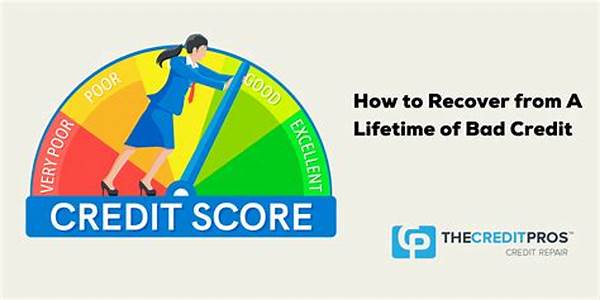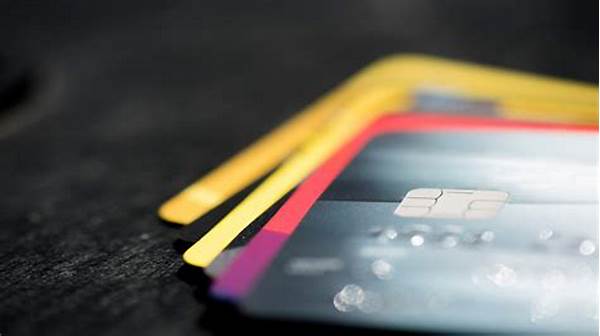How To Recover From Bad Credit Step-by-step
Dealing with bad credit can feel like navigating a labyrinth without a map. It’s easy to feel overwhelmed, but here’s the good news: you can rebuild your credit score with dedication and a clear strategy. In our fast-paced modern life, having good credit is essential for obtaining loans, renting apartments, and sometimes even landing jobs. But what happens when a few financial missteps leave you grappling with bad credit? Don’t fret! Understanding how to recover from bad credit step-by-step can empower you to reclaim financial control. By following the steps outlined here, you can gradually shift your credit score from bad to better and enjoy the myriad opportunities that come with solid creditworthiness.
Read More : Crypto Wallet
Embarking on this journey to improve your credit can seem daunting at first. However, with a logical plan and the implementation of specific strategies, you can dismantle the obstacles that come with a low credit score. Beyond just the numbers, bad credit can affect your mental and emotional stress levels, too. It’s like carrying a weight on your shoulders. Imagine the freedom you’d feel once you’ve shrugged it off! In this guide, we’ll serve as your financial GPS, directing you through the essential steps to restore your credit to its best possible state.
The importance of understanding your credit report cannot be overstated; it’s your financial report card. Through vigilance and commitment, anyone can transform their financial standing. So, if you’re ready to turn your credit misfortunes into a fiscal makeover, read on. We’ll unravel each step, bolster your confidence, and motivate you to take those vital actions that will lead to a credit score you can be proud of.
With the right mindset and a sprinkle of humor, you’ll soon see that improving your financial health is not just a duty – it’s an empowering journey. Let’s delve into how to recover from bad credit step-by-step and transform financial despair into credit triumph.
Understanding the Steps to Credit Recovery
Recovering from detrimental credit involves more than just hoping for the best; it requires a structured approach and a willingness to scrutinize one’s financial habits. The first step in this financial healing process is to obtain your credit report and understand what has gone wrong. Are there unpaid loans or missed credit card payments? Identifying these issues is essential to knowing where to begin.
The second crucial step is addressing any errors on your credit report. Believe it or not, mistakes happen, and if left uncorrected, they can drag down your score. This involves contacting the credit bureau and providing evidence to contest inaccurate entries. The aim is to have your report fairly reflect your financial activities, so any discrepancies should be tackled fiercely.
Next, create a realistic budget that incorporates your debt repayments. Start with paying off smaller debts to gain momentum – think of it as a financial snowball effect. As you eliminate smaller debts, apply those payments to larger ones. This tactic not only reduces your debt but gives you the psychological victory of achieving financial milestones.
Finally, consistency is key. Make on-time payments a part of your personal financial ethos. Future credit expansions may require higher scores, so nurturing consistent monetary habits is essential. We’ve laid out how to recover from bad credit step-by-step, but the journey is as personal as your credit score. Shape a strategy that’s realistic for your lifestyle, and watch your credit score rise like a phoenix from the ashes.
The Emotional Toll of Bad Credit
Behind every low credit score, there’s often a story—one filled with stress, sleepless nights, and sometimes, embarrassment. Imagine a job opportunity slipping through your fingers, all because of a credit check. It’s emotionally draining, serving as a constant reminder of past mistakes. Bad credit can lead to discouragement, but recognizing these feelings is the first step to conquering them.
Yet, it’s not all doom and gloom! Armed with determination and the right information, anyone can change their financial narrative. There’s a unique sense of accomplishment that comes with overcoming financial hurdles. It’s akin to climbing a mountain, where each step towards the summit is arduous, but the view from the top—priceless. Recovery stories aren’t just possible; they’re happening every day.
Embrace the challenge as an opportunity for growth. The journey to a higher credit score isn’t just about numbers; it’s about crafting a financially secure future. Reflect deeply on the factors that led to bad credit and consider them lessons, not failures. Treat each bill paid on time and each debt reduced as small victories on the road to credit salvation.
With friends and family often unaware of the depths of this struggle, remember, you are not alone. Countless individuals have walked the same path and emerged financially healthy on the other side. Whether it’s acquiring professional advice or discovering resources, remember that hope and help are always available. Let these realizations fuel your pursuit of recovery and channel your emotions into actionable resolve against bad credit.
Steps to Better Financial Health
To recover from bad credit step-by-step, first, promise yourself this: no more late payments. This simple commitment is one of the most effective steps you can take. Consider automating payments or setting reminders. Each on-time payment notches your credit score a bit higher, each like a rung on a ladder — steadily lifting you up.
Secondly, avoid new debts while paying off the old ones. This means rethinking unnecessary credit card purchases or loans. It’s almost like being on a financial diet — trimming the fat to reveal a healthier economic you. Sticking to this approach helps reduce the overwhelming feeling that bad credit can impose and shows creditors you’re serious about change.
Thirdly, it’s crucial to diversify your credit types. This doesn’t mean taking on new loans willy-nilly, but rather having a mix of credit cards, retail accounts, installment loans, etc., can actually be favorable. It’s like having a balanced diet in your financial regimen. Each type adds a different element to your credit profile.
As you implement these steps, remember to track your progress. Regularly reviewing your credit report ensures you’re moving forward and allows you to catch any anomalies. Each step taken is a stitch in the tapestry of newfound financial resilience. Together, let’s take action against bad credit with these step-by-step strategies and craft a compelling success story of financial redemption.
Tips to Recover from Bad Credit
1. Create an Emergency Fund: Having savings set aside prevents the need to revert to credit cards in emergencies.
2. Seek Professional Help: Sometimes a fresh perspective from a financial advisor can unlock new strategies.
3. Negotiate with Creditors: Many creditors are willing to work with you to adjust payment terms.
4. Limit Credit Inquiries: Each inquiry can hurt your credit score, so apply discerningly.
5. Use Credit Wisely: Once your score improves, maintain it by using credit in a disciplined way.
Creating an emergency fund is your financial safety net, ready to catch you when unexpected expenses arise. It’s a proactive approach to safeguarding your credit score from unnecessary dips due to urgent borrowing. Think of it as your financial buffer or cushion when life throws surprises.
Seeking professional help can be a game-changer. A seasoned financial advisor not only provides insights into managing credit but can customize a plan tailored to your unique circumstances. They act as your personal finance coach, cheering and guiding you on your journey to financial stability.
Negotiating with creditors may seem daunting, but you’d be surprised how amenable they can be. With reduced interest rates or modified payment plans, they might be your unexpected allies in overcoming debt. Limiting credit inquiries is the cherry on top; it’s all about strategic applications that don’t continually ding your score.
Utilizing credit wisely post-rehabilitation ensures your credit score remains robust. It entails disciplined credit card use, ensuring balances are paid in full whenever possible, and never biting off more credit than you can chew. May these tips guide you through how to recover from bad credit step-by-step, setting the foundation for a financially secure future.



